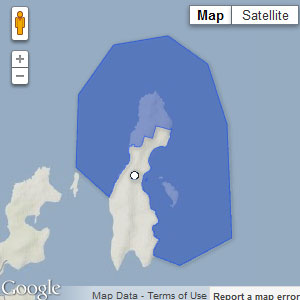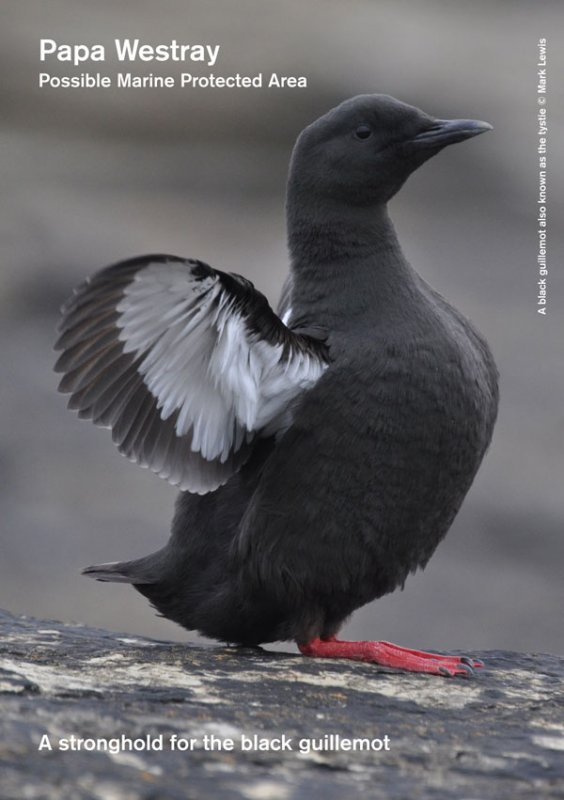The Northern Isles are a stronghold for the black guillemot. Over 400 of them breed within this MPA every year. Locally called “tysties”, from an Old Norse word describing their thin piping calls, they raise their young in crevices and burrows along the shores of Papa Westray and the Holm of Papa Westray. [1]
A consultation on management measures for this MPA is expected later this year, as part of a consultation on management measures for the second Tranche of Inshore MPAs and SACs.
History of this MPA
This MPA was designated in 2014. Save Scottish Seas campaign members assessed the Scottish Government’s MPA proposal for this site as part of its consultation response to the MPA network site consultation.
Read the our response to the 2013 site consultation here:
LINK supports the designation of the Papa Westray possible Nature Conservation MPA for the protection of black guillemot and geodiversity features – marine geomorphology of the Scottish shelf seabed. The proposed site holds a significant proportion of Scotland’s black guillemot population and has been established based on scientific evidence endorsed by the LINK.LINK supports the conservation objective ‘conserve’ for the above features.
Management Options:
We support the management option to remove set nets from, or avoid their introduction to, the site. Should a fishing practice thought to cause seabird bycatch or mortality commence, recommendations from the EU’s Action Plan for reducing incidental catches of seabirds in fishing gears must be adopted (COM(2012) 665).
LINK supports the management measure to reduce or avoid the spread of mammalian predators and would strongly support the development of biosecurity plans for the terrestrial breeding habitat adjacent to each of the possible MPAs which include black guillemot as a protected feature. RSPB Scotland shall be developing biosecurity best practice guidelines and will welcome discussion regarding the application of these guidelines within colonies adjacent to possible MPAs.
LINK suggests that this MPA is considered in the parallel draft seaweed policy statement consultation, and particularly with regards to guidance developed for the harvest of wild seaweed.Socioeconomic Assessment:
The potential value of the Papa Westray possible MPA to divers and sea anglers has been estimated at £4.9 to £10.4 million based on willingness-to-pay measures (Kenter et al., 2013) . Kenter et al. also found important emotional and well-being benefits associated with the Papa Westray possible MPA, with divers and anglers responding to questionnaire scoring >4 (out of a maximum score of 5) for engagement, spiritual and transformative wellbeing indicator values.Strategic Environmental Assessment
By establishing biosecurity on the islands, this site would also be contributing safeguards to populations of other seabirds breeding on Papa Westray. Most notably, it would also be providing protection to the population of Arctic tern and Arctic skua listed as designated features in the SPA. However, unlike black-guillemot, these two species are in decline and so for the biosecurity to offer additional benefits to these species, protection of at-sea feeding areas will also be required.
Where present, kelp habitats ought also to be protected in this pMPA to support wider ecosystem function, including black guillemot feeding.
Check out the official documents relating to the possible Papa Westray MPA on the Scottish Natural Heritage website.
[1] Papa Westray MPA Site Summary document


